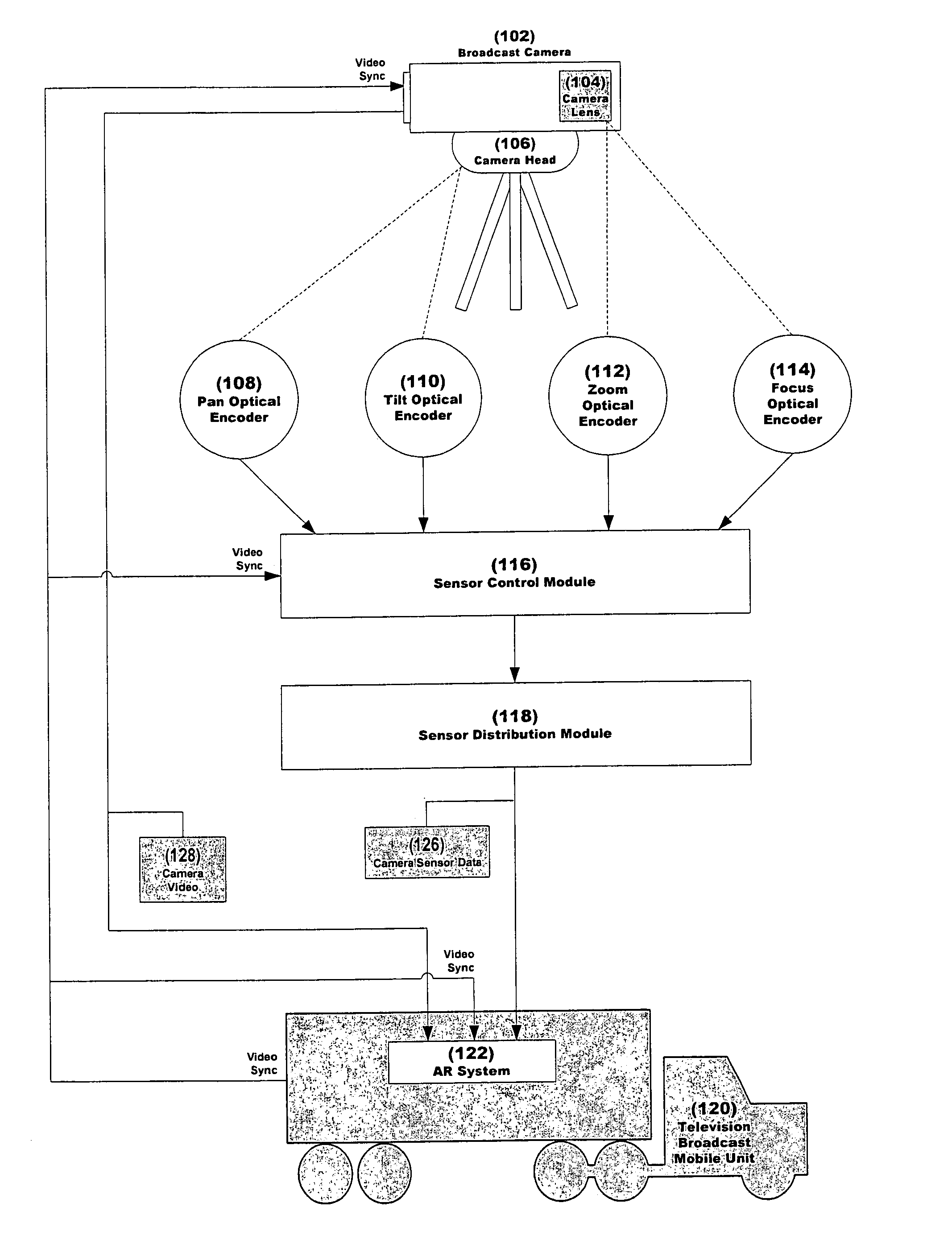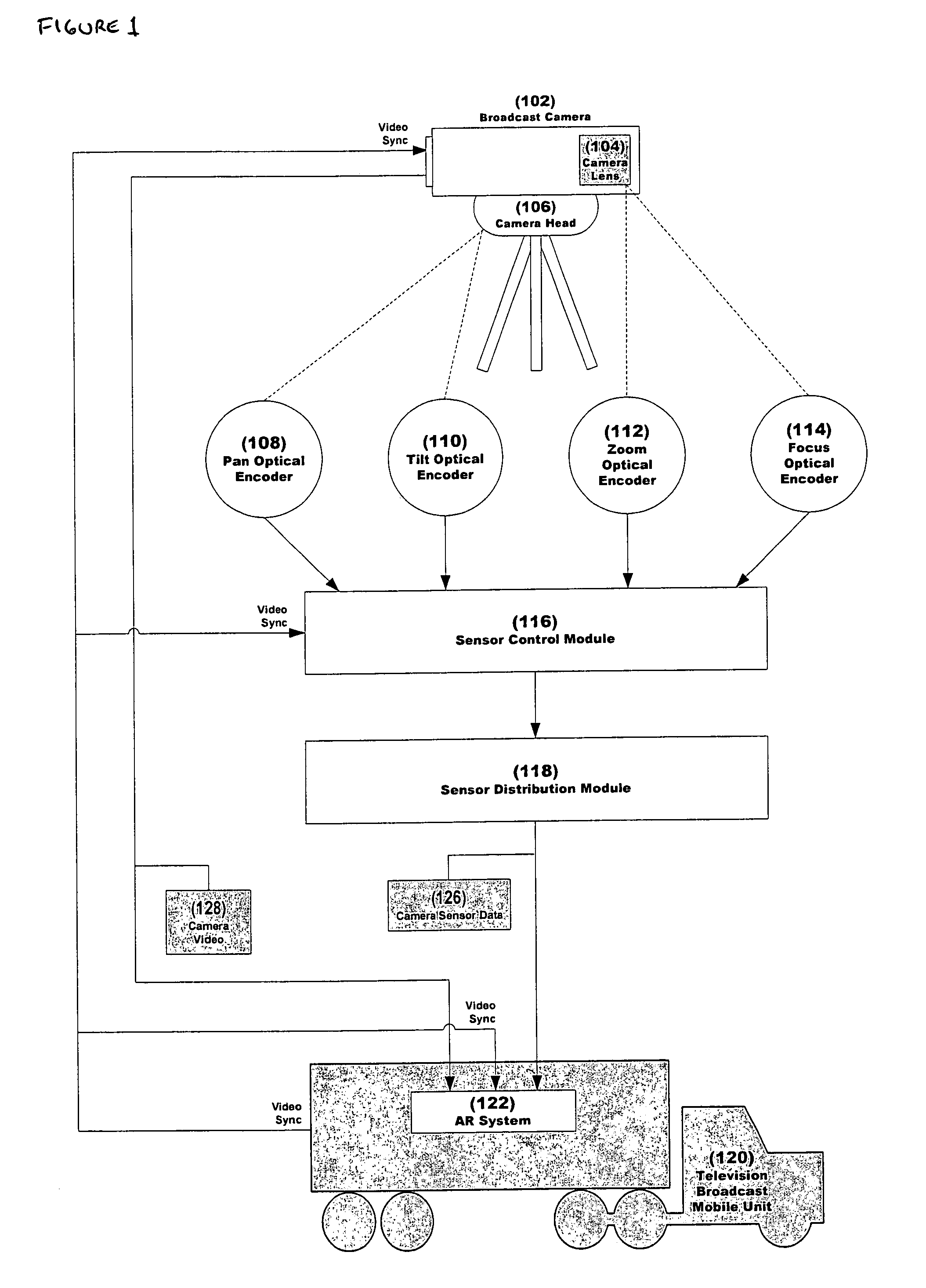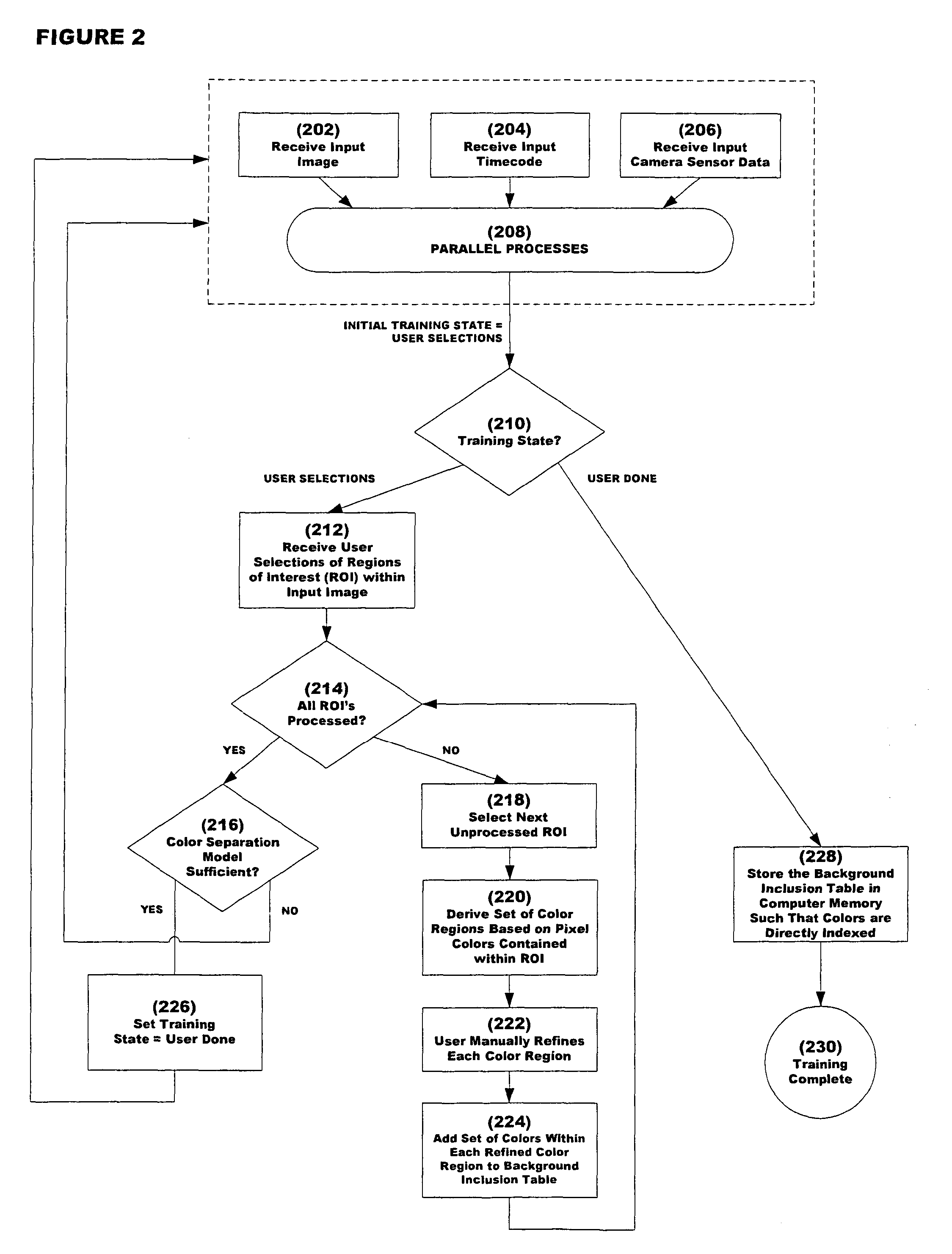System and method for inserting content into an image sequence
a technology of content and image sequence, applied in the field of system and method for augmenting an image sequence with content, can solve the problem that the on-site setup phase may typically be completed in a relatively short amount, and achieve the effect of a higher degree of communication and general interaction, and the flexibility and general utility of the ar insert system
- Summary
- Abstract
- Description
- Claims
- Application Information
AI Technical Summary
Benefits of technology
Problems solved by technology
Method used
Image
Examples
Embodiment Construction
[0060]A preferred embodiment of the present invention is intended to be useful within both a live broadcast television production setting, as well as a post production broadcast television setting. Furthermore, a preferred embodiment of the present invention requires a setup phase to allow calibration of camera sensors, as well as derivation of various parameters and data structures associated with the view modeling and color separation methods. Thus, two different operating modes are associated with the present invention—(1) Setup, and (2) Production. We will now describe, in detail, the fundamental concepts, usage paradigms, and preferred implementations of the invention within the context of each of these operating modes, referring to the figures for illustration.
1. Setup
[0061]During the setup phase of a preferred embodiment of the present invention, seven primary steps are typically performed: (A) setup, at a fixed location, a broadcast camera with attached camera sensors; (B) p...
PUM
 Login to View More
Login to View More Abstract
Description
Claims
Application Information
 Login to View More
Login to View More - R&D
- Intellectual Property
- Life Sciences
- Materials
- Tech Scout
- Unparalleled Data Quality
- Higher Quality Content
- 60% Fewer Hallucinations
Browse by: Latest US Patents, China's latest patents, Technical Efficacy Thesaurus, Application Domain, Technology Topic, Popular Technical Reports.
© 2025 PatSnap. All rights reserved.Legal|Privacy policy|Modern Slavery Act Transparency Statement|Sitemap|About US| Contact US: help@patsnap.com



